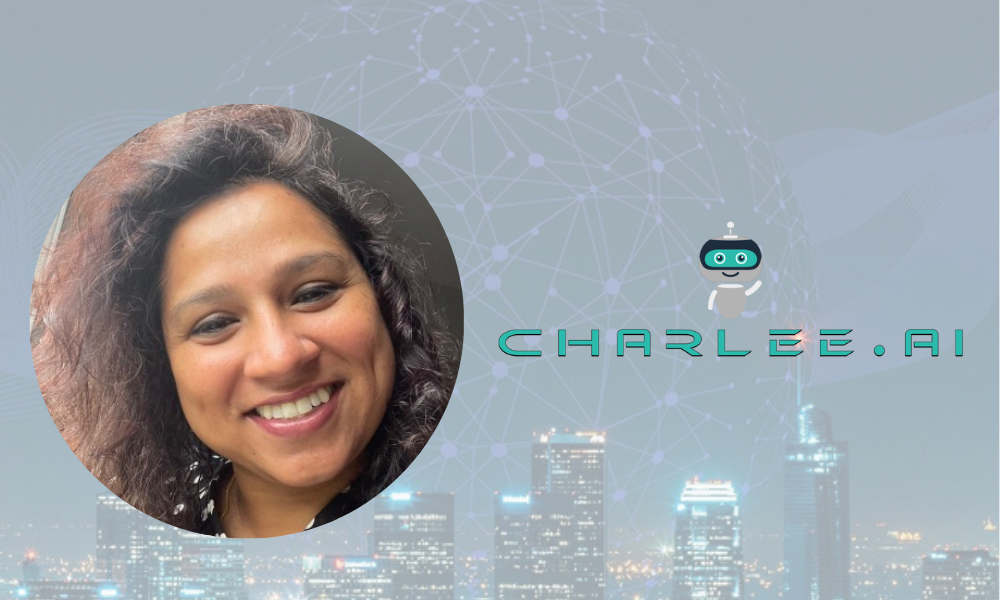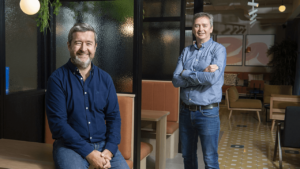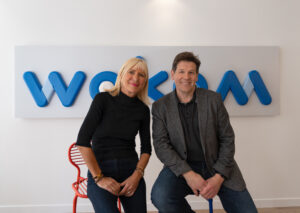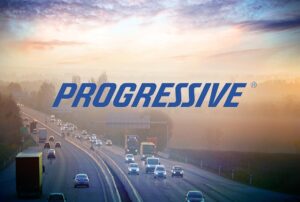Sri Ramaswamy’s entry into the insurance industry has not been a conventional journey. The CEO and Founder of Charlee.AI – an AI, Natural Language Processing, and Machine learning-based ‘Predictive Analytics for insurance’ company based in San Francisco Bay Area, started off her career in Sales in a showroom in Hyderabad, India.
But, hailing from a lower middle class family, she had no thoughts of university – or a career in technology. Thankfully, a lucky break saw her graduate in Database Administration in Australia – setting her on a path for entrepreneurship and a career journey that would raise her far from her roots. Insurtech insights caught up with her to find out more.
Your original career path wasn’t in insurance – and you had quite different aspirations. Can you tell us about your journey?
Believe it or not, my initial aspirations included becoming a Bollywood actress and even a cocktail mixer. My mother vehemently opposed both pursuits, to the point of threatening to “chop off my legs” if I ventured into those fields.
So, I altered my course and found myself working at Samsung, primarily in showroom sales. Initially, I served more of an administrative role, but then an interesting challenge emerged: microwaves. The company had these new-fangled appliances, but they were struggling to sell them. Leveraging my background in catering and hotel management, I saw an opportunity. I gathered customer information, devised a prospect database, and pioneered a form of contextual marketing. I began sending personalised letters to households, inviting women to Saturday cooking classes featuring microwave recipes. Women loved it, and within a month, we witnessed a 150% increase in sales.
How did you make the jump from sales to technology?
Well, my boss didn’t recognise my sales achievement as much as he recognized my data capabilities. My boss suggested a career in technology, reports, and data analytics. At the time, these were foreign concepts to me. But when I looked back at what I had done in terms of reports and data points and connecting with customers, I realised he was right. I did have an affinity for data and analytics.
He encouraged me to pursue further education, which at the time I thought was ludicrous given my family’s affordability. My dad was in and out of jobs so grandparents supported us helping put two meals a day on the table. My sister was ill, so there were a lot of medical expenses too. It was tough as I was the bread winner. At that point in my life, branching out to go to university and studying was nothing more than a pipedream.
Luckily, my cousin generously agreed to sponsor my studies and provided a loan, allowing me to embark on a journey to Australia, where I pursued a Master’s degree in technology. I specialised in Database Administration, topping my class. I also started a small branding company helping out small mom/pop shops build their brand through logos, t-shirts etc and sold that company to pay off six-months tuition fees. That’s when my technology journey and entrepreneurial bug really started.

Where does insurance fit into all this?
Not long after graduation, I got married, and my husband’s job took us both to San Diego. I was working in banking industry implementing CRM and analytics solutions, but San Diego offered limited opportunities, and the closest related field was insurance. Consequently, I embraced my first job at an insurance company. It was a multifaceted role, and I was tasked with revamping their IT infrastructure, reporting, analytics, and automation.
After my stint at the insurance company, I transitioned to a software company specialising in launching insurance vertical products driven by data analytics. During this phase, I introduced two solutions—one for underwriting and another for claims. My responsibilities encompassed prototyping, architectural planning, and product launch. The subsequent steps involved securing early adopters for these solutions and managing the intricate task of integrating the systems into client companies.
As I engaged with early adopters, particularly in the claims processing domain, I encountered a pivotal realisation. Conversations with claims managers and VPs of claims operations shed light on their desire for deeper insights buried within claim notes. These notes contained valuable information, but accessing it posed a challenge.
It became evident that the insurance industry lacked a standardised approach for measuring claims leveraging these facts of loss hidden in claim files and documents. Simply gauging claims volume or the monetary value of indemnity, medical expenses, or property damage payments didn’t suffice. Each claim had unique characteristics and risk factors that were often overlooked. This realisation paralleled mathematical concepts – without a common denominator, true aggregation and reporting were impossible.
At this stage, my focus wasn’t on prediction; it was on uncovering insights hidden within claim documents and converting them into bits and bytes aimed to transform them into quantifiable data. This epiphany laid the foundation for what would eventually become Charlee.
Transitioning from a steady career path into an entrepreneurial startup is a big step. Tell us about that.
Necessity is the mother of all invention, as they say, and following my tenure in this role, I faced a critical decision. My inability to travel due to my three-year-old and my insatiable thirst for learning led me to opt for consulting rather than committing to a 100% role in database product sales. This decision paved the way for the birth of Charlee, originally as a consulting company.
Charlee initially revolved around the development of a robust big data platform capable of ingesting data in various formats, from PDFs to web services, APIs, third-party data, and unstructured data found in claim notes, PDFs, and Word documents. This platform was engineered to facilitate the extraction and transformation of insights from unstructured data into a more measurable format.
Charlee was a pioneer, a beacon and flag bearer for leveraging advanced A.I. such as NLP + proprietary claims language model for predictions.
How was the market reception to Charlee? Was it a tough nut to crack?
It was very good! We had the opportunity to connect with a major life insurance company in the US. Interestingly, they expressed a sentiment that mirrored what we’d heard from others. They acknowledged the excellence of our platform but lacked the technical expertise to build upon it. In essence, they were seeking a plug-and-play solution.
One of these insurance giants specifically required a fraud detection solution. This is when I decided to bring in my co-founder, who had extensive experience leading the fraud division at the California Department of Insurance, along with other domain experts. This marked a turning point in Charlee becoming a product company. We realised that moving beyond data consumption and format flexibility meant delving into the interpretation of document contents. To achieve this, we needed experts who understood the nuances of the insurance domain.
With their expertise, we crafted a fraud solution that seamlessly integrated with the platform I had developed earlier. The valuable lesson learned from these early adopters was clear: the industry required plug-n-play pre-trained solutions that were ready to use, without the need for extensive customisation. They wanted something that worked out of the box, and that’s precisely what we developed and patented.
The company has evolved further since then though. Can you tell us about that?
In 2017, we partnered with a life insurance company and aided a complex workers’ compensation fraud case, deepening our expertise. A P&C homeowners insurance firm recognized the potential of our litigation prediction and pre-litigation pattern/trend detection.
We knew we had built something unique and had the potential to expand the pretraining of insights into commercial and personal P&C lines. This called for applying for patents (have secured 2, filed 2 with 8 more to go)
Our strategic approach between 2018 and 2021 involved pre-training Charlee to understand claims documents in various formats, culminating in the “claims large language model.” This specialisation became our primary differentiator, enabling swift implementations and immediate value for carriers. Rigorous testing validated practical benefits, and in 2022, external capital infusion accelerated our growth, with proven results showcasing our impact in addressing the insurance industry’s unique challenges.
Protection of data has become an industry in itself. What’s your take on the latest regulatory measures? Do they go far enough?
Our commitment to data security led us to achieve SOC 2 compliance in 2021, marking a pivotal milestone. SOC 2 compliance extends beyond data protection; it encompasses the fortification of processes and the assurance of employee practices. Collaborating with N.A.I.C. plays a critical role in educating stakeholders about the capabilities and limitations of AI, fostering a realistic perspective in a tech landscape often obsessed with grand visions.
In the fast-paced world of technology, there’s a tendency to chase the next big thing, but we believe that incremental successes are equally vital. These successes are rooted in data, making data security paramount. SOC 2 compliance instils a sense of responsibility within our team, ensuring they fully understand the data they handle and the importance of secure processes.
Data breaches can often be traced back to internal lapses, emphasising the need for vigilant employees. SOC 2 serves as a protective layer, securing not just data but also trust and process integrity. In summary, data security is the cornerstone of our operations, and SOC 2 compliance reinforces our commitment to safeguarding data, processes, and trust.
You’ve risen in your industry, far further and faster than most. Do you think women in general have much better opportunities to establish themselves in high ranking roles now?
Over the past two decades, I’ve witnessed significant changes in the insurance and technology industries, particularly in terms of women’s participation. It’s important to note that while I believe these changes are positive, I also want to emphasise that the focus should ultimately be on skills and innovation rather than gender.
In the banking and insurance sectors, there has been a surprising and long-standing presence of women, and this trend continues today. Women have risen to prominent positions and are making significant contributions. While there may be some naysayers, they are not the majority, and the industry has generally embraced women in leadership roles. The trust and support for women in these sectors seem well-established.
Despite its reputation for innovation, the technology sector faces challenges in promoting diversity and supporting women’s advancement. There’s a common perception that the tech industry is already diverse and equal, but in reality, there’s much progress to be made. The focus should shift towards promoting skills diversity and innovation within tech companies.
I’m proud to have observed the increasing prominence of women in the insurance industry over the past 15 years. However, it’s essential to remember that gender should not be the sole focus. Instead, we should prioritise skills and capabilities when driving innovation. Women have indeed risen to leadership roles in insurance, and this achievement is supported not only by women but also by men who recognise and promote their talents.
What leadership traits have you personally found most helpful over the course your career?
I believe there are three core principles: integrity, respect, and excellence. Integrity is foundational because it engenders trust, which is paramount. Respect for others and their contributions is equally important. Lastly, excellence should never be hidden. If you excel at what you do, embrace it.
As a leader, I see my role as a facilitator, enabling my team to excel in their roles. Trust is vital, as many leaders today are not trusted. My primary duty is to empower my team to perform optimally, not to micromanage.
In the insurtech world, I’ve noticed a challenge: founders transitioning into CEOs sometimes lose the initial passion and trust that attracted their team. The key is to maintain both the founder’s passion and CEO responsibilities while keeping the sense of adventure alive. Founders-turned-CEOs must remember what ignited their team’s trust and enthusiasm in the first place to sustain long-term success.
What inspires you in insurtech today?
Data and technology. Data is at the core of it all. Insurtech is practically overflowing with data, and we’ve only scratched the surface. In fact, we haven’t even come close to exploring its full potential. It’s like this massive mountain of untapped information that we’ve barely begun to ascend. We’re at the very base of what could be a radically transformed InsureTech industry in the next 20 to 30 years.
Imagine you’re using binoculars to peer into the future, trying to decipher what lies ahead in the next two or three decades. As you focus on the landscape of insurtech, it becomes clear that data is the driving force. It’s this unwavering passion for data that keeps me going.
Interview by Joanna England
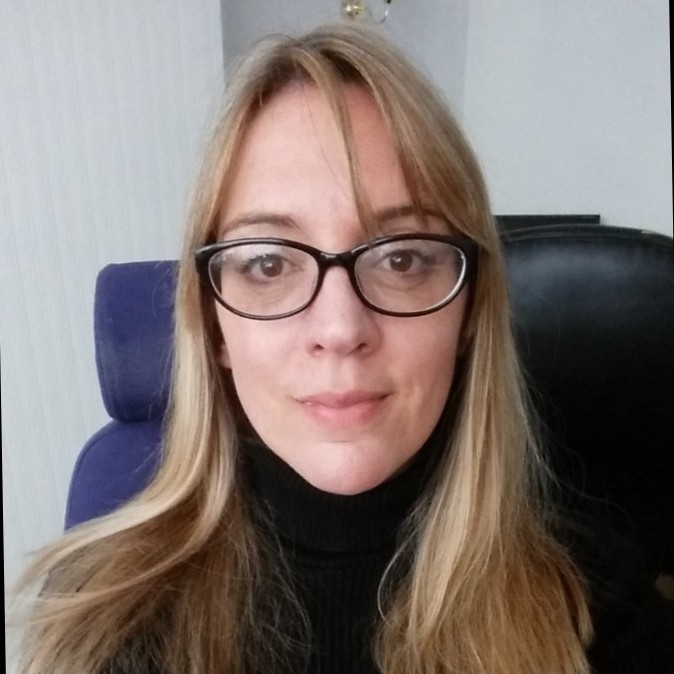
Joanna England is an award-winning journalist and the Editor-in-Chief for Insurtech Insights. She has worked for 25 years in both the consumer and business space, and also spent 15 years in the Middle East, on national newspapers as well as leading events and lifestyle publications. Prior to Insurtech Insights, Joanna was the Editor-in-Chief for Fintech Magazine and Insurtech Digital. She was also listed by MPVR as one of the Top 30 journalist in Fintech and Insurtech in 2023.

